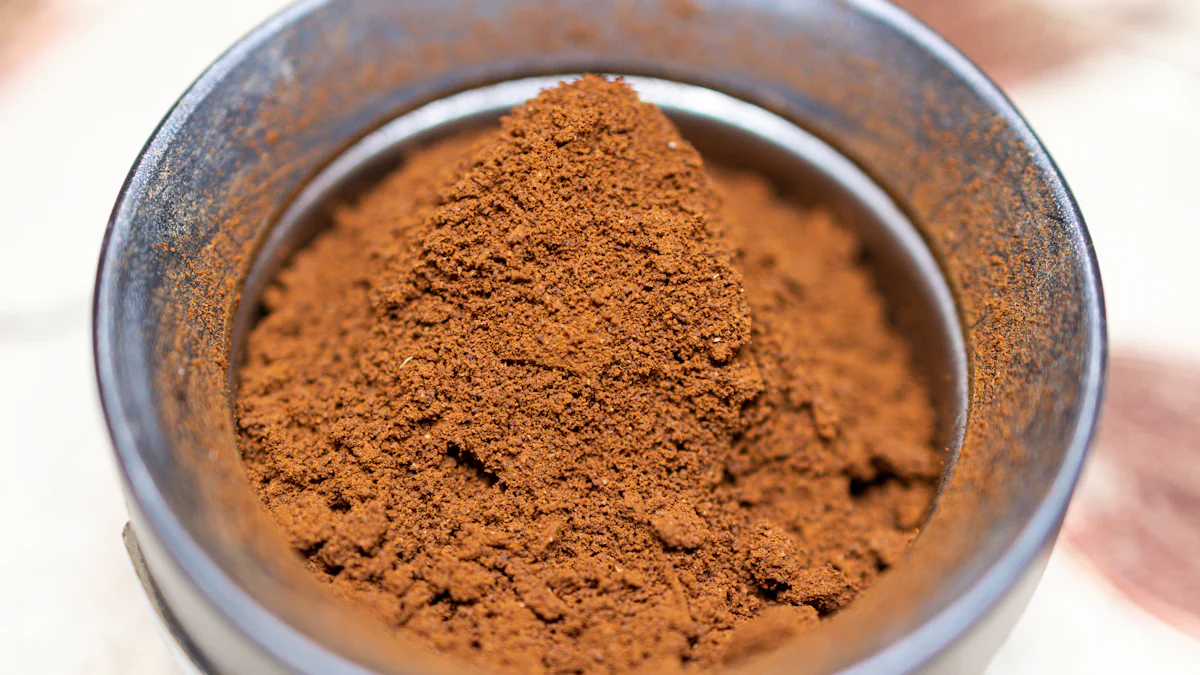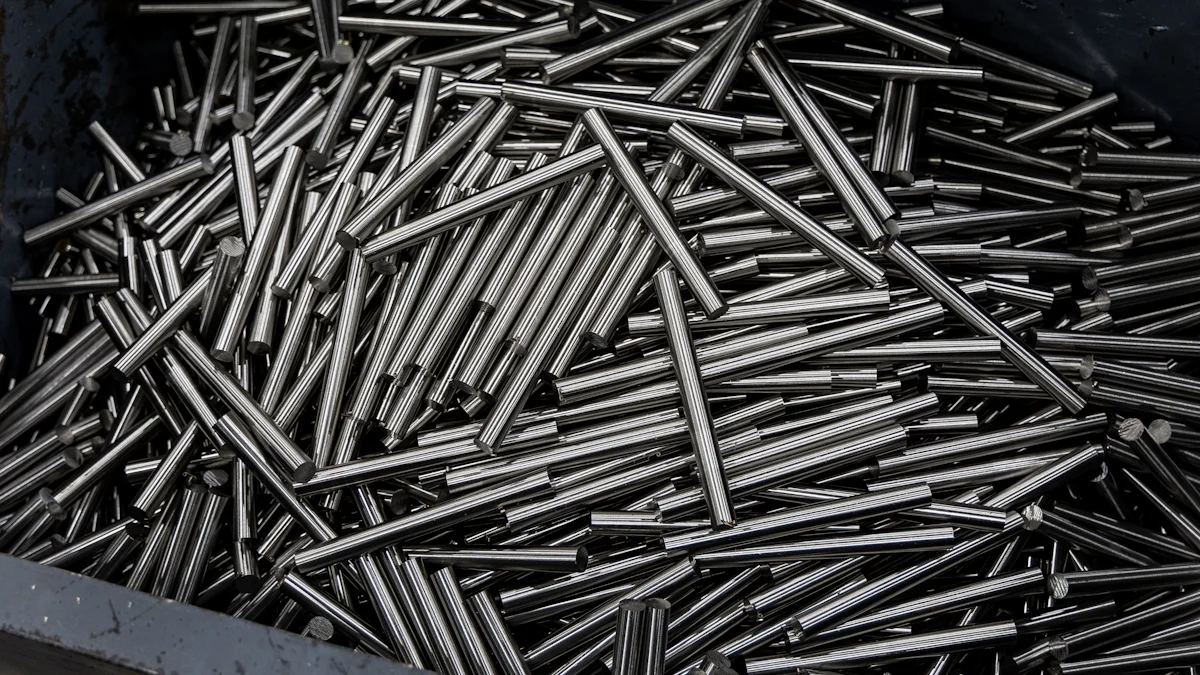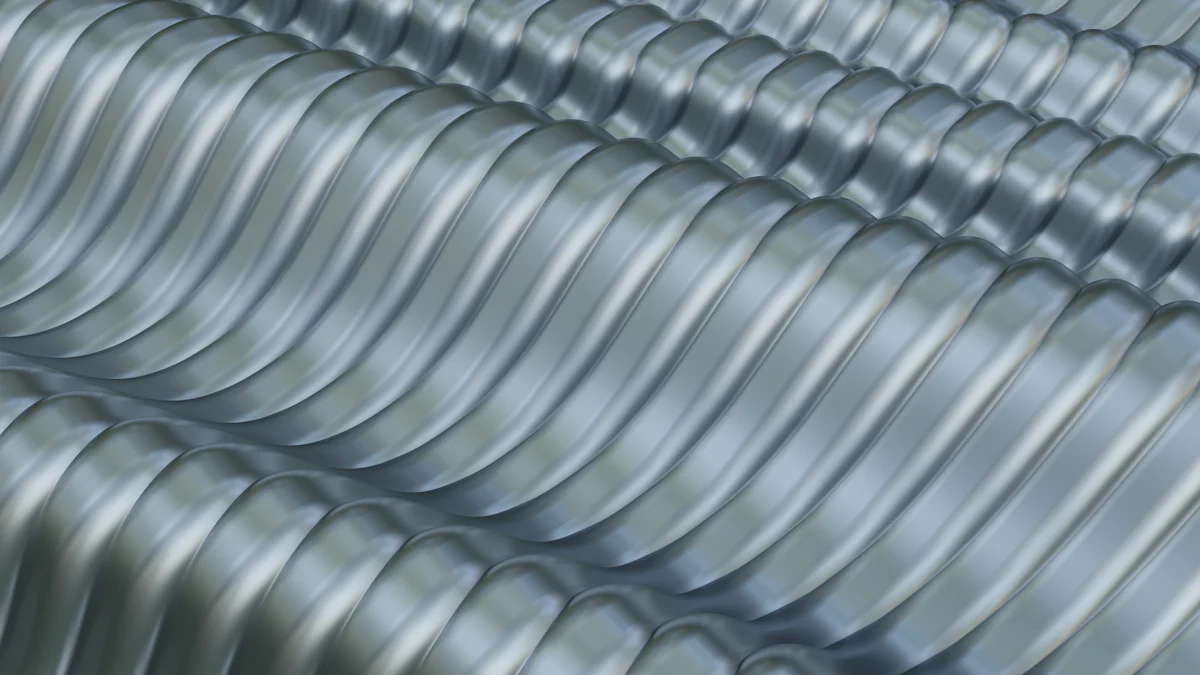
When I think about advanced materials, I often wonder, what is powdered steel? It stands out as a remarkable innovation. It’s a type of steel created through powder metallurgy, offering a fine grain structure that enhances its performance. Compared to traditional steel, powdered steel exhibits a more uniform microstructure with evenly distributed carbide particles. Here’s a quick comparison:
| Type of Steel | Grain Structure Description |
|---|---|
| Powder Steel | Fine grains, more uniform microstructure, evenly distributed carbide particles. |
| Traditional High-Speed Steel | Coarse grains, less uniform microstructure, uneven distribution of carbide particles. |
This unique structure gives powdered steel superior hardness, wear resistance, and exceptional uniformity, making it ideal for high-performance applications.
Key Takeaways
- Powdered steel is created using powder metallurgy. This gives it a fine grain structure, making it harder and more durable.
- The way powdered steel is made helps control the mix of metals. This makes it perform better than regular steel.
- Powdered steel can have custom metal mixes. This lets makers adjust features like hardness and rust resistance for certain uses.
How is powdered steel made?

The process of creating powdered steel is fascinating and involves several precise steps. Each stage contributes to the material’s unique properties, such as its fine grain structure and exceptional performance. Here’s how powdered steel is made:
Powder atomization process
The journey begins with the production of metal powder. Manufacturers use a technique called atomization, where molten metal is broken into fine particles. This process ensures uniformity in the powder’s composition. Common materials used include:
- Titanium powder
- Stainless steel powder
- Tool steel powder
- Nickel alloy powder
- Iron alloy powder
Atomization plays a critical role in determining the quality of the final product. The resulting powder forms the foundation for the next steps.
Sintering and consolidation
Once the powder is ready, it undergoes sintering—a process that heats the material below its melting point to bond the particles together. Sintering offers several advantages:
- Reduces energy consumption and machining needs
- Utilizes over 97% of raw material
- Produces intricate shapes with precise forming capabilities
This step not only improves material utilization but also allows for greater customization of the final product. The consolidated material gains strength and durability, making it ideal for high-performance applications.
Final shaping and finishing
The final stage involves shaping and finishing the sintered material. Manufacturers use techniques like compacting and machining to achieve the desired dimensions and surface quality. This step ensures the powdered steel meets the exact specifications required for its intended use. Whether it’s for tools, knives, or industrial components, the finished product exhibits superior hardness and wear resistance.
Understanding these steps helps answer the question, “what is powdered steel?” It’s a material crafted with precision, offering unmatched performance and versatility.
Advantages of powdered steel
Superior hardness and wear resistance
I’ve always been impressed by how powdered steel achieves its exceptional hardness and wear resistance. This quality stems from the powder metallurgy process, which enhances properties like toughness and edge retention. The finer carbides in powdered steel significantly improve its performance. Unlike traditional steel, powdered steel can maintain high hardness without sacrificing toughness.
Scientific studies back this up. Research on powder metallurgy parts shows that precise process parameters result in high wear resistance and moderate toughness. For example, carburized powdered steel exhibits negligible weight loss during wear tests, even under low loads. This makes it ideal for applications requiring durability, such as industrial tools and high-performance knives.
Enhanced uniformity and consistency
One of the standout features of powdered steel is its uniformity. I’ve noticed that its microstructure is far more consistent compared to traditional steel. This uniformity ensures that the material performs reliably across various applications. The even distribution of carbides prevents weak points, which often lead to premature wear or failure in traditional steel.
This consistency also simplifies machining and finishing processes. Manufacturers can achieve precise dimensions and surface quality with minimal effort. Whether it’s for intricate tools or robust industrial components, powdered steel delivers dependable results every time.
Customizable alloy compositions
Another advantage I find fascinating is the ability to customize alloy compositions in powdered steel. This flexibility allows manufacturers to tailor the material’s properties to specific needs. For instance, adding carbon increases hardness, while chromium enhances corrosion resistance.
Here’s a quick look at how different alloying elements affect performance:
| Alloying Element | Key Effects |
|---|---|
| Carbon | Increases strength and hardness but reduces ductility and corrosion resistance |
| Chromium | Improves corrosion resistance and hardenability in steels |
| Nickel | Enhances toughness, tensile strength, and elevated temperature properties |
| Molybdenum | Increases high-temperature strength, creep resistance, and hardenability |
| Vanadium | Forms fine carbides to significantly increase wear resistance and hardness |
This versatility makes powdered steel suitable for a wide range of applications, from camshafts and gears to turbocharger wheels and brake discs. Each composition is optimized for performance, ensuring the material meets the demands of its intended use.
Powdered steel vs. traditional steel

Differences in manufacturing processes
The manufacturing processes for powdered steel and traditional steel differ significantly. Powdered steel is created using powder metallurgy, which involves sintering metal powder under high temperature and pressure. This method allows for precise control over the alloy composition and microstructure. In contrast, traditional steel is produced through smelting, casting, forging, and heat treatment. These steps offer less control over the final composition. Here’s a quick comparison:
| Manufacturing Process | Powdered Steel | Traditional Steel |
|---|---|---|
| Method | Powder metallurgy process | Traditional metallurgical process |
| Alloy Composition Control | Better control over alloy composition and microstructure | Less control over alloy composition |
| Production Steps | Made by sintering powder under high temperature and pressure | Made by smelting, casting, forging, and heat treatment |
This table highlights how powdered steel’s advanced process results in a more refined and consistent material.
Performance and durability comparison
Powdered steel outperforms traditional steel in both performance and durability. Its fine grain structure and uniform carbide distribution enhance hardness, wear resistance, and edge retention. Traditional steel, with its coarser grains, often lacks the same level of consistency. I’ve noticed that powdered steel maintains its properties even under extreme conditions, making it ideal for high-performance applications. For instance, tools made from powdered steel exhibit superior toughness and longer lifespans compared to their traditional counterparts.
Applications in tools and knives
Powdered steel has become a favorite in the production of premium tools and knives. I’ve seen Elmax, a popular powdered steel, used in folding knives, fixed blades, and custom designs. Its edge retention, toughness, and corrosion resistance make it a top choice for these applications. Beyond knives, powdered steel is also used in cutting tools and industrial equipment. Industries like automotive and aerospace rely on it for components such as camshafts, gears, and jet engine turbines. Its ability to withstand extreme conditions ensures reliability in demanding environments.
Powdered steel’s versatility and superior properties make it a game-changer in modern manufacturing. Understanding what is powdered steel and how it compares to traditional steel highlights its importance in high-performance applications.
Powdered steel offers exceptional benefits that make it indispensable in modern manufacturing. Its remarkable hardness, wear resistance, and thermal stability ensure superior performance in high-stress environments. Industries like automotive, aerospace, and medical rely on powdered steel for critical components such as gears, turbine blades, and surgical instruments. This material’s precision and strength enable the creation of complex shapes with minimal waste, enhancing both efficiency and sustainability.
I encourage you to explore powdered steel for applications requiring unmatched durability and precision. Its versatility and advanced properties make it a game-changer in high-performance tools and specialized industries.
FAQ
What makes powdered steel better than traditional steel?
Powdered steel offers superior hardness, wear resistance, and uniformity. Its fine grain structure ensures consistent performance, making it ideal for high-performance tools and demanding applications.
Can powdered steel be used for custom applications?
Yes, powdered steel allows customizable alloy compositions. Manufacturers can tailor its properties, such as hardness or corrosion resistance, to meet specific requirements for tools, gears, or industrial components.
Is powdered steel more expensive than traditional steel?
Powdered steel typically costs more due to its advanced manufacturing process. However, its durability and performance often justify the higher price in high-stress or precision applications.
